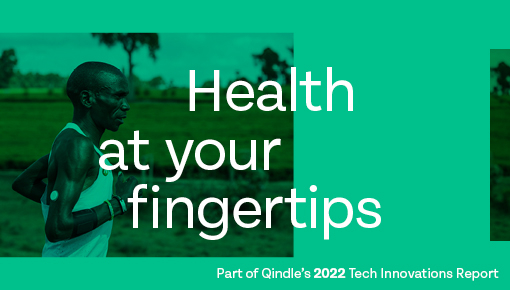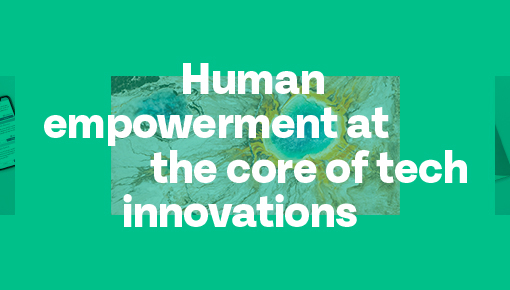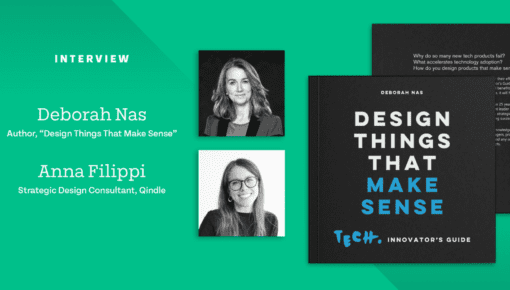Incentivising health through design
Healthcare is increasingly adopting design as a core principle: in the devices we use, the thoughtful layout of healthcare facilities and the human-centred orchestration of services. Design is inherently about understanding user context, making it an important ingredient in any health application. But with the growing focus on prevention, design is yet to realize its potential when it comes to incentivising healthy behaviour.
The intention-behaviour gap is well documented. Despite our best intentions, many of us don’t follow through with healthy actions, whether that’s eating and drinking better, moving more or taking other steps to improve our wellbeing. Public providers and private companies alike have developed a range of tools to incentivise us to bridge the gap. However, the way incentives are designed – both in their reward structure, along with how they are integrated into our lives – can make or break their effectiveness.
Beyond financial incentives to the world of ‘nudges’
Financial incentives are popular for tracking and rewarding the exercise component of wellbeing. London-based Sweatcoin partners with the NHS to reward users who meet their step count, and hundreds of similar schemes are in play across the world. Yet financial incentives don’t guarantee long-term behaviour change and don’t scale well to all health goals. Disincentives (such as bans and taxes) have their own constraints. Enter: nudge theory.
Nudge theory is a behavioral economic concept popularized by US academics Richard Thaler and Cass Sunstein in their 2008 book Nudge: Improving Decisions About Health, Wealth and Happiness. Thaler and Sunstein define a nudge as:
“…any aspect of the choice architecture that alters people’s behavior in a predictable way without forbidding any options or significantly changing their economic incentives.”
Nudges are already used widely in our daily lives: think calorie counts on menus, buildings with fewer lifts, salad as the default side option, or a bit of (healthy) social pressure through gamification. Consumer technology has expanded these possibilities even further, with ‘technology-mediated nudges’ on the rise, delivered by health apps and wearables.
Nudge theory remains controversial, and its definition is still evolving. However, there is mounting evidence of its ability to move the needle on certain health issues, such as this systematic review of nudges in diabetes management. Future generations of health nudges will be even ‘smarter’, using artificial intelligence to understand the unique motivations of each patient in the form of precision nudging.
Design is a critical ingredient for effective health incentives, both online and offline
For health incentives to be successful, they need to integrate seamlessly with users’ lives and resonate with their needs. Designers are experts in this field, and are equipped with specialist tools to understand a whole person and their context. Below, we examine examples from consumer health technology, physical environment and healthcare delivery where design has been instrumental in incentivising healthy behaviour.
Design-led consumer health technology
- Apple Watch. Yes, a banal example to head up this list. However, Apple’s relentless focus on design is exactly how it came to dominate the smart watch market. Apple could report users’ activity with simple metrics – but there’s something inherently satisfying about closing your rings.
- Headspace. From the moment users open the app, Headspace contains clever design features to personalise their meditation experience. Users often struggle to find time to meditate, which Headspace mitigates with targeted reminders (that can be added to a calendar) and tailored content; all to prevent the typical two-week drop off in engagement.
In addition, Headspace’s visual language communicates their mission to make meditation more relatable and inclusive. The company communicates complex human emotions through illustration, swapping sharp edges for calm colours and friendly design. - Peloton. Beneath the slick aesthetic, Peloton employs behavioural science in its cult suite of fitness systems. Peloton helps users into a routine through instantly available classes, rewards and extensive gamification. Besides, Peloton systems are sleeker and smaller than their competitors, meaning users tend to park them in more visible areas in their homes – leading to greater use.
Physical Environments & Healthcare Delivery
- Healthier indoor environments. For years, architects have been working out how to redesign traditionally sedentary indoor locations, such as offices, into active spaces. Making the stairs more attractive is an obvious answer (see the famous Piano Stairs) but lighting, heating and acoustics all play a role.
- Reducing aggression in emergency departments. The NHS reduced hostile behaviour with design-led approaches that sought to understand the emergency department experience from a patient perspective. The solution? A comprehensive package of information design, with integrated signage and live data on wait times.
- Improving medication adherence through generics. Patients are more likely to fill (and take) their medication when it’s less expensive. The Nudge Unit at Penn Medicine changed the provider drop-down menu so generics would appear before expensive branded alternatives. Seemingly overnight, the generic prescribing rate increased to nearly 99%.
Despite the differing delivery modes, the success of these health incentives relies on the same underlying factors: understanding the whole person and their context, while targeting highly specific behaviours or actions to achieve health outcomes. Qindle is excited to be doing just that: we’re currently working with a start-up to develop a product that nudges its users to hydrate, through clever industrial design. It’s high time we used design to its fullest potential, to support healthy people and planet.



